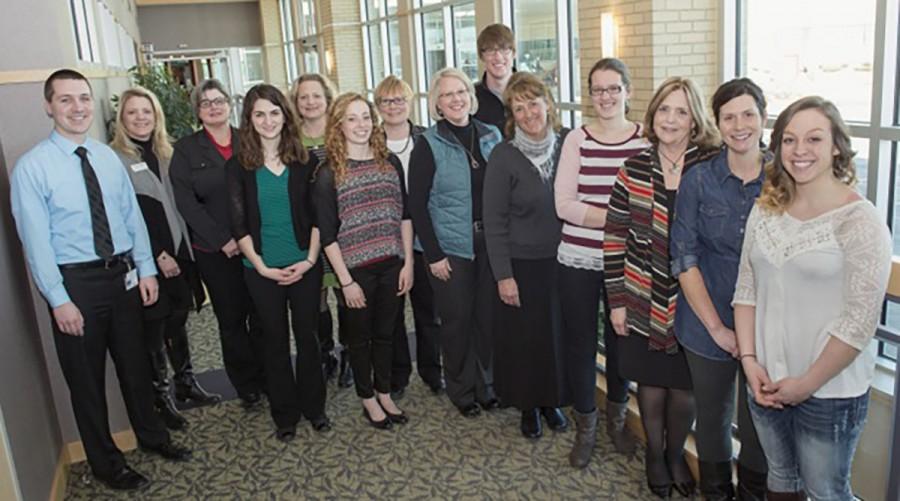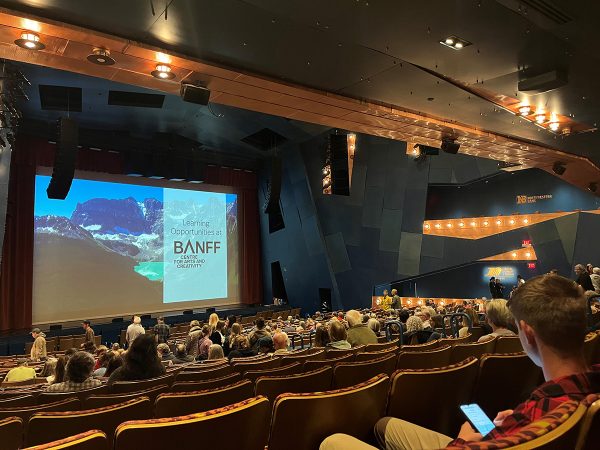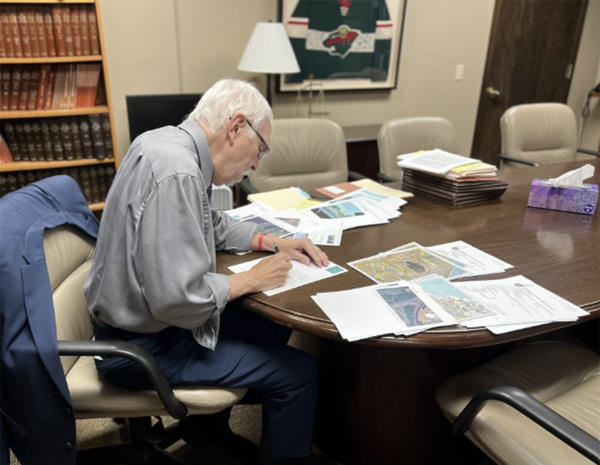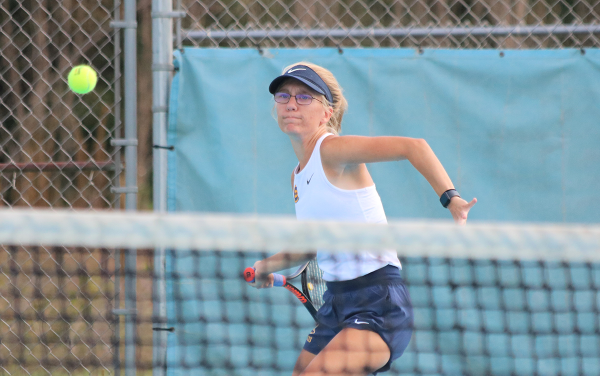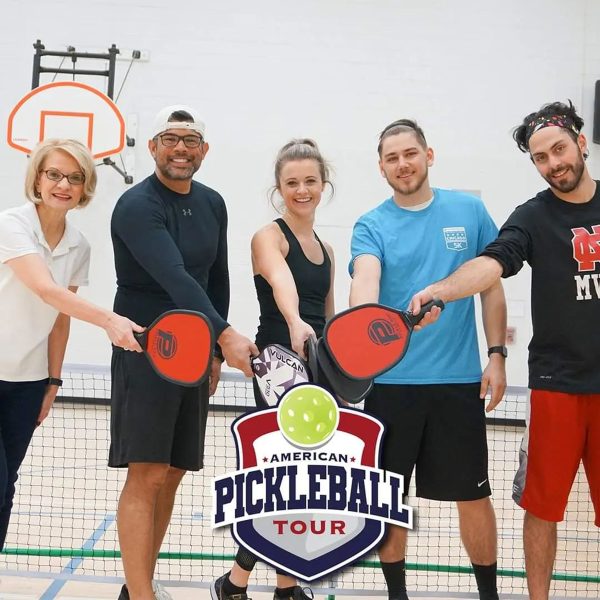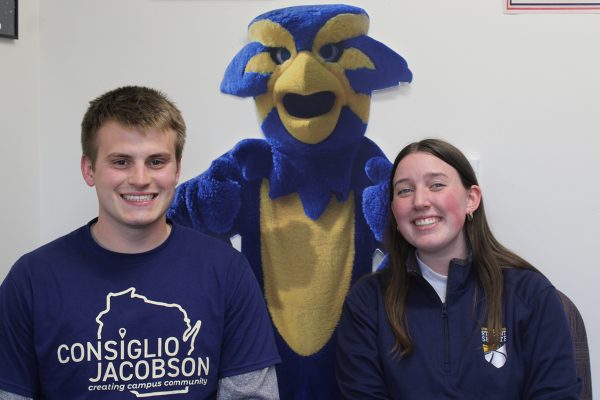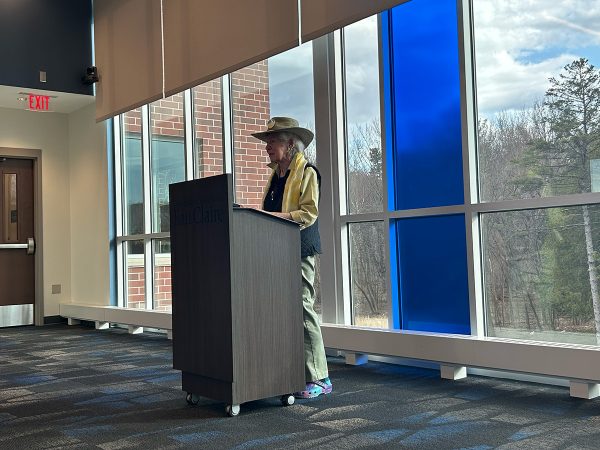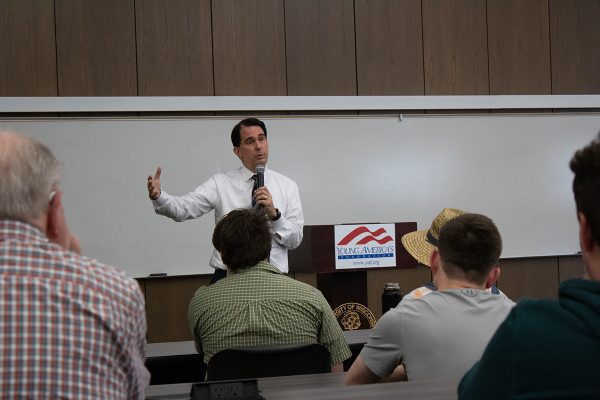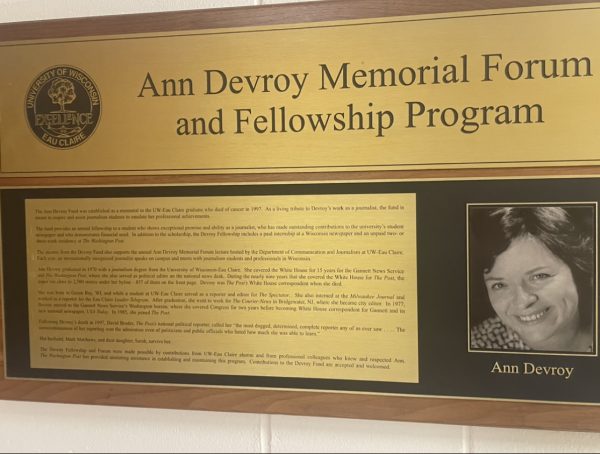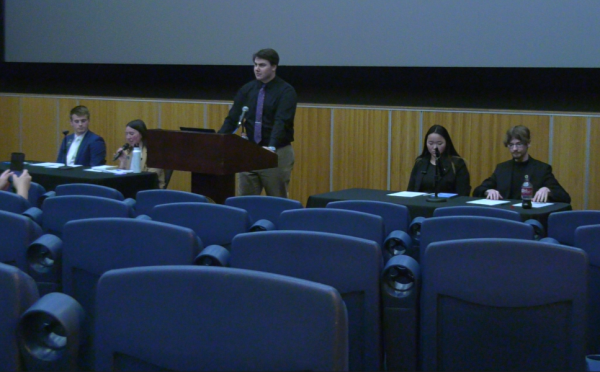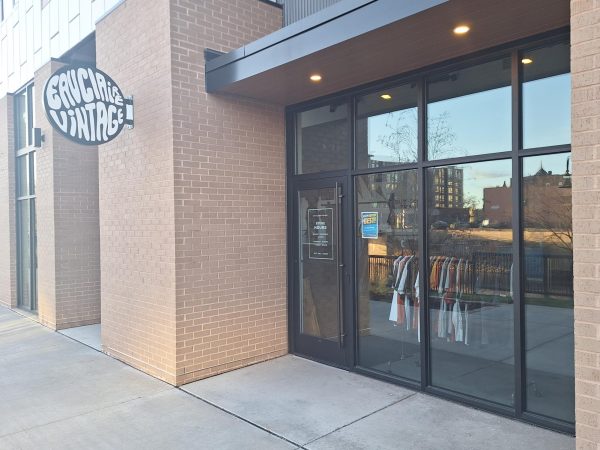A helping hand for better health
Senior Anna Hamer brings change to the community with her new student organization started on campus
More stories from Lauren Kritter
Photo by SUBMITTED
Pictured are students Hamer and Koenigsberg along with faculty members Dr. Ruth Cronje and Nora Airth-Kindree who all helped start the Community Connections Team at Marshfield Clinic and went on to start and be part of the new student organization, Community Care Allies.
A lot of our health comes from who we are, where we reside and how we take care of ourselves. But there are some people who have other things in their lives that affect their health that could be dealt with by getting lead in the right direction from others in the community.
This is the exact thought that came to senior psychology major, Anna Hamer’s mind last year.
Hamer was involved in the creating of the Community Connections Team at Marshfield Clinic where volunteers create connections for patients at Marshfield to the outside community, which helps them with possible health needs they might be dealing with.
“The idea of this team is to link people to the places they can go to get the help they are seeking,” Hamer said.
Hamer was originally the volunteer coordinator at Marshfield Clinic and helped to recruit people for the Community Connections Team. After she realized all the work she was putting into getting people to volunteer she decided to get involved with the team herself, she said.
The Community Connections Team gained popularity from UW-Eau Claire students for many reasons; one being it covers all 30 hours of service learning required to graduate. Unfortunately, the team can only hold around 20-30 students a semester and it requires them to be involved for at least two full semesters, Hamer said.
Hamer realized that this couldn’t fit everyone’s schedules and saw that more people wanted to get involved with something like this. That is when she and graduate co-partner Cynthia Koenigsberg decided to start their own student organization on campus related to the work they were doing at Marshfield, she said.
Community Care Allies was created last semester and has come in full effect for its first semester this fall as an extension of the Community Connections Team.
The organization helps community members get connected to resources within the community, where at Marshfield they are only able to help their patients.
“Seeing what was going on at Marshfield made me want to give back more,” Hamer said. “I became aware of how many other students wanted to be a part of something like this.”
Instead of entering the healthcare system to get resources, Community Care Allies picks resources they feel can help people in the community without them having to spend a huge load of money, Hamer said.
The organization uses the Great Rivers database containing a list of all of the resource available in the area. The organization’s volunteers aim to help people who might not have access to the database or might not have time to figure it out.
When a patient approaches a table where the volunteers are set up, they are asked to fill out a survey listing their top three needs they desire to be met, Hamer said.
The organization contains three sub committees that were created based off of the needs community members said they were looking for: food, clothing and transportation. Within these committees, they connect patients to resources related to them and set up events accordingly, Hamer said.
“We act as a link for people to help them get to where they want to go,” Hamer said. “Health care can’t take its full effect if basic needs aren’t met.”
Associate English department professor Dr. Ruth Cronje and Nursing Professor Nora Airth-Kindree are co-faculty advisors for Community Care Allies and have helped Hamer in the process of getting the student organization up on its feet.
With starting a student organization you need a faculty advisor to get involved. Hamer asked these two because they were also involved in the Community Connections Team and already knew a lot about what was going on.
Airth-Kindree said Hammer is stellar at what she does with the organization. She gets everything organized and gets everyone’s schedules made.
“It’s really impressive what she does,” Airth-Kindree said. “She comes up with ideas, she put the board together. I always tell Anna how impressed I am by her.”
Airth-Kindree said Hamer is always coming up with creative ways to include and reach more people.
“She is very passionate about helping people in the community,” Airth-Kindree said.
Through guidance and support from her faculty advisors, Hamer has been able to successfully implement the organization this semester.
“It’s a lot of work to get a student organization started, you don’t even think about it,” Hamer said. “But now that it’s up and running, it’s gotten a little easier for me to delegate tasks to others.”
Community Care Allies currently has around 15 students involved in the organization. Since this is the first semester the organization has been in full effect, Hamer is hoping as time goes on the organization will grow in both the number of volunteers and the number of organizational partners.
Hamer said she has gotten a lot out of running this organization so far. She said it has taught her how to act professionally, communicate effectively, delegate tasks and work in a leadership position.
She said she hopes to use the experiences she has gained to get projects and programs started in schools relating to what she wants to do after she graduates.
The organization meets once a month at 6 p.m. on Thursdays to discuss what the plans are with the sub committees. They throw around ideas and decide as a group if that is something they would want to do, Hamer said. They also bring in guest speakers occasionally, she said, to get the volunteers pumped about giving back.
Because the program is so new, it’s hard to see the impact of the organization on the community so far. Airth-Kindree said they keep track of who asks about what things for follow-up reasons. That way they can see if the patients found the right resources and figured it out, she said.
Both Hamer and Airth-Kindree said they think involving yourself in an organization like this one is beneficial because of the change of insight it can bring. It really allows you to see the prevalence of poverty in our community, Hamer said.
Airth-Kindree said it is a way for one to see what the community can offer them and what they are able to offer the community back.

